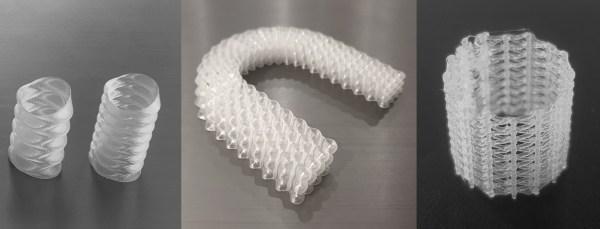Slicing software needs to maintain a balance between ease-of-use and control, while handling handle any STL file you throw at it. If you eliminate the need to convert an existing 3D model, and create G-Code directly, you gain a lot of design freedom, at the cost of increased design effort. By taking advantage of this freedom and making it more accessible, [Andrew Gleadall] and [Dirk Leas] created the FullControl Design Library.
Each model is a mathematically generated extrusion path with a host of adjustable design parameters and print settings. This allows you to print things like a single-layer non-planar part, or 90° overhangs without any support (video after the break). The website was built using the python version of the original Excel-based FullControl Designer (unreleased at the time of writing), and threejs for the 3D visualization.
Go browse the library, play with some parameters and see what strikes your fancy. For ideas, help and updates, keep an eye on the FullControl Subreddit.
Continue reading “Playing With The Power Of Full G-Code Control”














